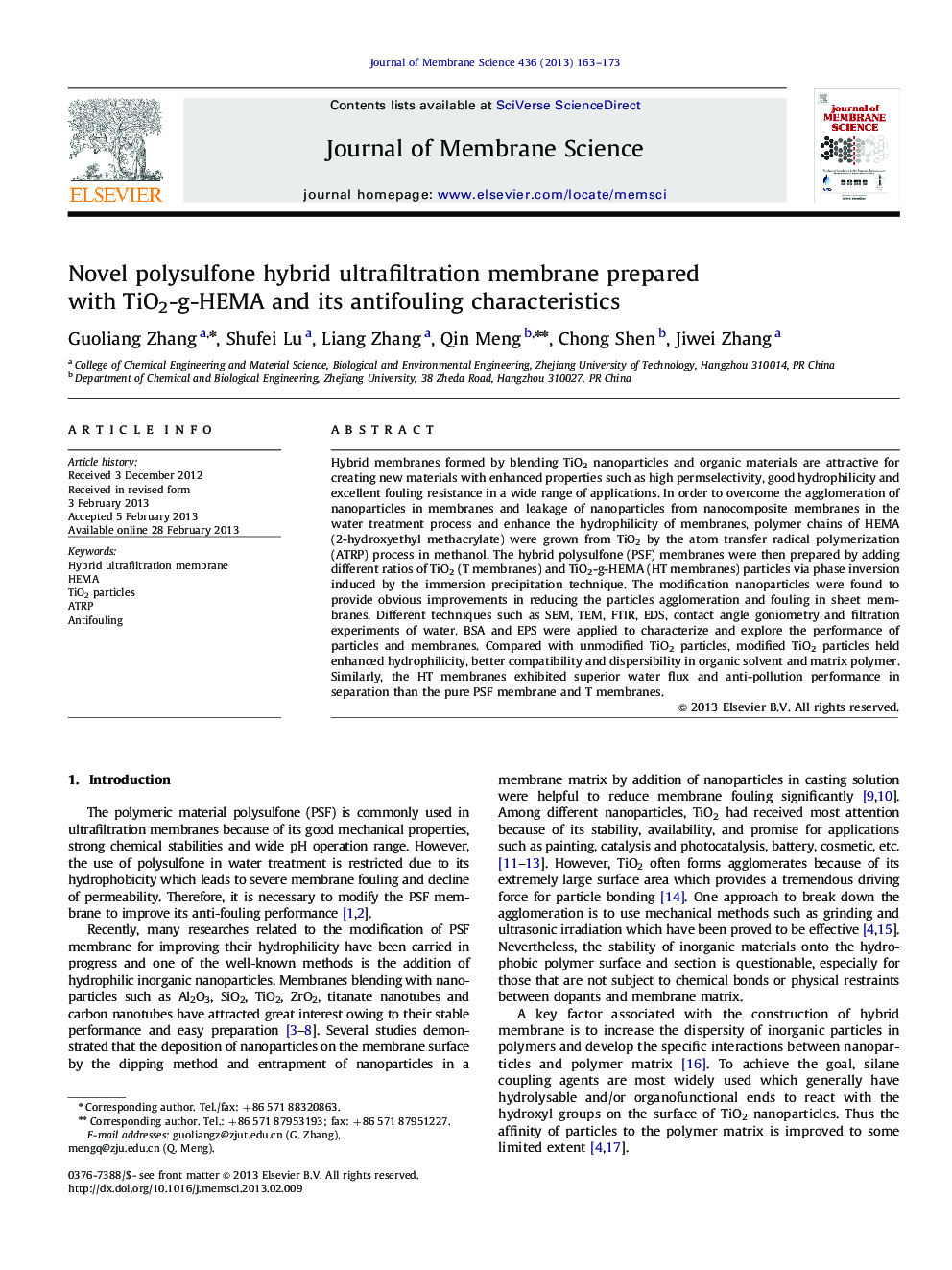| Article ID | Journal | Published Year | Pages | File Type |
|---|---|---|---|---|
| 634341 | Journal of Membrane Science | 2013 | 11 Pages |
Hybrid membranes formed by blending TiO2 nanoparticles and organic materials are attractive for creating new materials with enhanced properties such as high permselectivity, good hydrophilicity and excellent fouling resistance in a wide range of applications. In order to overcome the agglomeration of nanoparticles in membranes and leakage of nanoparticles from nanocomposite membranes in the water treatment process and enhance the hydrophilicity of membranes, polymer chains of HEMA (2-hydroxyethyl methacrylate) were grown from TiO2 by the atom transfer radical polymerization (ATRP) process in methanol. The hybrid polysulfone (PSF) membranes were then prepared by adding different ratios of TiO2 (T membranes) and TiO2-g-HEMA (HT membranes) particles via phase inversion induced by the immersion precipitation technique. The modification nanoparticles were found to provide obvious improvements in reducing the particles agglomeration and fouling in sheet membranes. Different techniques such as SEM, TEM, FTIR, EDS, contact angle goniometry and filtration experiments of water, BSA and EPS were applied to characterize and explore the performance of particles and membranes. Compared with unmodified TiO2 particles, modified TiO2 particles held enhanced hydrophilicity, better compatibility and dispersibility in organic solvent and matrix polymer. Similarly, the HT membranes exhibited superior water flux and anti-pollution performance in separation than the pure PSF membrane and T membranes.
Graphical AbstractFigure optionsDownload full-size imageDownload high-quality image (290 K)Download as PowerPoint slideHighlights► TiO2 was modified with HEMA by ATRP and successfully used as PSF membrane additives. ► Grafted TiO2 had good compatibility and hydrophilicity in solvent and matrix polymer. ► Particle agglomeration and macrovoids in hybrid HT membrane were suppressed. ► HT membrane exhibited superior water flux and anti-pollution ability in separation.
